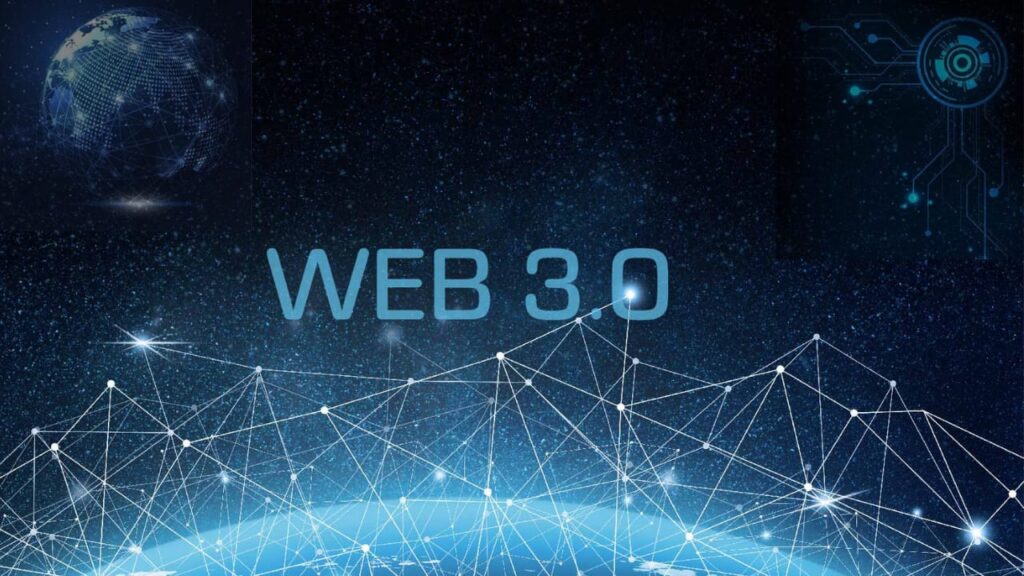Introduction of Web 3.0
The possibilities of Web 3.0 are endless. By using blockchain (and without having one central area of command), finance (DeFi) startups can bring to life new business models, increase functional effectiveness, and enter new era of finance & technological advancements. In this composition, we will look at the benefits of Web 3.0 for startups, the advantages of using Defi and blockchain, and new opportunities.
1. Web 3.0’s Core Features
The main benefits and characteristics of Web 3.0 are as follows. Hopefully, this will help you comprehend what the impending innovation contains & what the future holds.
1.1. Decentralized
Decentralization is at the core of Web 3.0. This version of the web, unlike its predecessors, enables simultaneous storage of digital data across multiple places, avoiding the need for centralised authority and returning control to the users as a result. User’s collectively hold the distributed ledger validating the data instead of a central authority keeping the data.
1.2. Permissionless
One of the main advantages of Web 3.0, in addition to decentralisation, is that it will be trustless (‘Trustless’ means there is no need to rely on trust in a third party) and it is permissionless. That basically means that players won’t need to acquire permission from a governing body or go through an intermediary in order to interact.
1.3. AI-Powered
In Web 3.0, machines will finally be able to comprehend and process information similarly to humans, mostly because of advancements in artificial intelligence, machine learning, and natural language processing (NLP). This results in development of a truly intelligent ecosystem to meet the demands of its users.
1.4. 3D graphics
Web 3.0 will replace present two-dimensional web visuals and videos with more lifelike three-dimensional graphics. Users will receive a nearly real-life online experience thanks to this, and many businesses will benefit as well.
For businesses involved in the gaming, real estate, and e-commerce industries, 3D design is particularly advantageous. Customers would constantly be aware of what they are paying for when purchasing goods and services online with the help of 3D graphics. Most popular advancement in this is Metaverse. Facebook is promoting the use of Metaverse & 3D graphics on its platforms like Facebook, WhatsApp & Instagram.
1.5. Semantic-Driven
We’ll soon experience the intelligent internet, which will better grasp and express meaning and emotions by utilising all available data, thanks to AI and ML algorithms. The Semantic Web consists of a set of technologies that focus on data, how is described, modelled, and linked. Such a semantic web will be able to interpret the true meaning of the material and offer practical applications.
2. Why should startups embrace Web 3.0?
For any business, staying up-to-date with emerging trends is highly beneficial. Thorough explanation of the benefits of using Web 3.0 for commerce is given below.
2.1. Ownership and management of data
Users will finally be able to fully control their data thanks to Web 3.0. Since consumers would have complete data ownership, consumers will be free to choose which portions of their personal information they are willing to disclose with companies. This would result in more transparency.
2.2. Interoperability
Anyone knowledgeable about web application development will be happy to hear this. Cross-platform availability will no longer be a problem because tools will function on all hardware or operating systems seamlessly.
2.3. Unrestricted blockchain
Anyone can join the network and participate because there is no central authority, bias, or discrimination. This could enable the swift, secure, and painless international transfer of digital assets.
2.4. Anti-monopoly
Users will have complete control over their data, which will end the monopoly of IT firms. Thus, a market built on fair principles will become more transparent.
The adoption of Web 3.0, however, will force startups to reconsider their business strategies and adjust to finding new sources of income. So, don’t hesitate to reach out to WLC and begin your digital disruption journey.
3. Startups Implications of Web 3.0
Almost everything in Web 3.0 is built on blockchain and runs on smart contracts, which are only activated when certain conditions are met. And so there is no necessity of middlemen. There are numerous business ramifications for this particular capability, but there are also others. We’ll go over the top three benefits in more detail below.
3.1. Increase in cryptocurrency
Web 3.0 will, first and foremost, greatly accelerate the development of cryptocurrencies. Either business will produce their coinage or they will decide to accept existing coins as payment methods.
The demand for decentralisation, anonymity, and security that Web 3.0 will bring about will certainly lead to a rise in the use of cryptocurrency. This is because cryptocurrencies help speed up payment processing, allow for the discretion of personal data, and keep everything encrypted for higher levels of security. They also do away with middlemen and the associated transaction costs.
It is therefore important to consider the creation of blockchain-based coins or tokens that can help your business thrive within the web of things as ‘realities become closer’. WLC can help with Blockchain, Web 3.0, DeFi apps, Cryptocurrency integrations, AI, ML & much more.
3.2. Increase in DeFi
Like cryptocurrencies, decentralised finance (DeFi) is a type of financial technology built on distributed ledgers. It is generally employed to eliminate third parties from financial transactions, such as banks. In a nutshell, it enables people and companies to make payments directly among themselves through peer-to-peer networks.
We know, people already want to have more financial control. Blockchain will only make this better. Similar to individuals, startups desire more power over their assets. As a result, more and more businesses will use DeFi software to achieve financial independence and prevent pointless bottlenecks that result from doing business with middlemen.
3.3. Development of DApp
As the Web takes shape in our society, DApp development is likely to rise, which is a crucial development for business leaders to remember.
While DApps are created on decentralised networks like Ethereum, they are similar to traditional software in many ways. Through the aforementioned smart contracts, they link to the blockchain instead of the centralised data servers that traditional programmes rely on. lowering the likelihood of downtime if any components of the network architecture fail.
It’s interesting to note that there are already several DApp implementations for Web 3.0. Nearly 4,000 decentralised applications are known to be in existence as of this writing, and some of the best ones fall under the social, DeFi, and NFT categories.
4. Challenges to Face in the Startups of Web 3.0
Web 3.0 will have its difficulties to take into account, as with any new or developing technology. Therefore, it’s a good idea to read them and be aware of how they will impact businesses and what to anticipate.
Web 3.0 will increase the demand for businesses to shift digitally. Companies will need to stay up with them and update their online solutions to support all the features of the upcoming internet edition because it contains a variety of cutting-edge technology.
The absence of appropriate regulations and procedures to regulate Web 3.0 will certainly be another challenge we encounter. The usage of data should be governed by a set of policies due to its decentralised nature.
5. Prepare Your Company for Web 3.0
While people and businesses throughout the world speculate about what Web 3.0 will look like, some are already working hard to get ready for it and test various ideas. There are several ways for you to get started with emerging technologies and an edge over the competition, from cryptocurrencies to NFTs.
Of course, the beginning can seem intimidating. However, there is a strong desire to be ready for the new Internet era. Because of this, our team is pleased to provide a wide range of Web 3.0 compatible blockchain development services, such as creating cryptocurrency or DApps. If history is any indication, both big and small businesses, as well as the public and social sectors, may wish to pay attention to the progress that has already been made and begin considering ethical ways to engage with it. So, to increase the value of your journey, call out to WLC.
6. Automated lending as an illustration of what might change in Web 3.0
It is best to start with the use case where Web 3.0 achieved its initial product-market fit: financial services, to demonstrate the disruptive potential of Web 3.0. Smart contracts are now being used in remittances, asset swaps, trade finance, and insurance to increase automation efficiency. One of the most convincing Web 3.0 implementations to date may be seen in lending.
In today’s traditional financial services, loan origination relies on the bank as the dependable third party to protect funds. Depositors contribute money in exchange for a tiny bit of interest. The bank then maintains records on a separate ledger and compiles data on prospective borrowers to assess their creditworthiness and calculate the cost of their loan. Borrowers are charged additional fees to support these operations and give the bank’s management income. Although rates were historically low, in recent years, relatively little interest was paid to depositors. And this can improve with the introduction of Web 3.0 & distributed ledger
7. Putting Your Startup In Web 3.0 Position
Although Web 3.0 is still a few years away from widespread usage, companies should take note of it. The advantages of leveraging it are numerous. It’s a good idea to get ready for the startup’s official launch in the interim. Three easy preparatory steps are as follows:
1)Learn about Web 3.0’s foundations and how you might position your startup.
2)Learn from the mistakes of Web 3.0 pioneers by researching them.
3)When studying Web 3.0, start slowly and gradually increase your knowledge and skills over time.
Conclusion
The continued development of Web 3.0 is what will shape web development in the future. In the end, Web 3.0 means better user experience, security, and transparency. It also means faster transactions and lower data storage costs.
The majority of businesses lack internal competence in internet web 3.0 technologies because the new-generation web is still in its infancy. Therefore, it only makes sense to look for a reliable web development business like WLC. We are skilled in creating distributed apps and developing internet applications.





